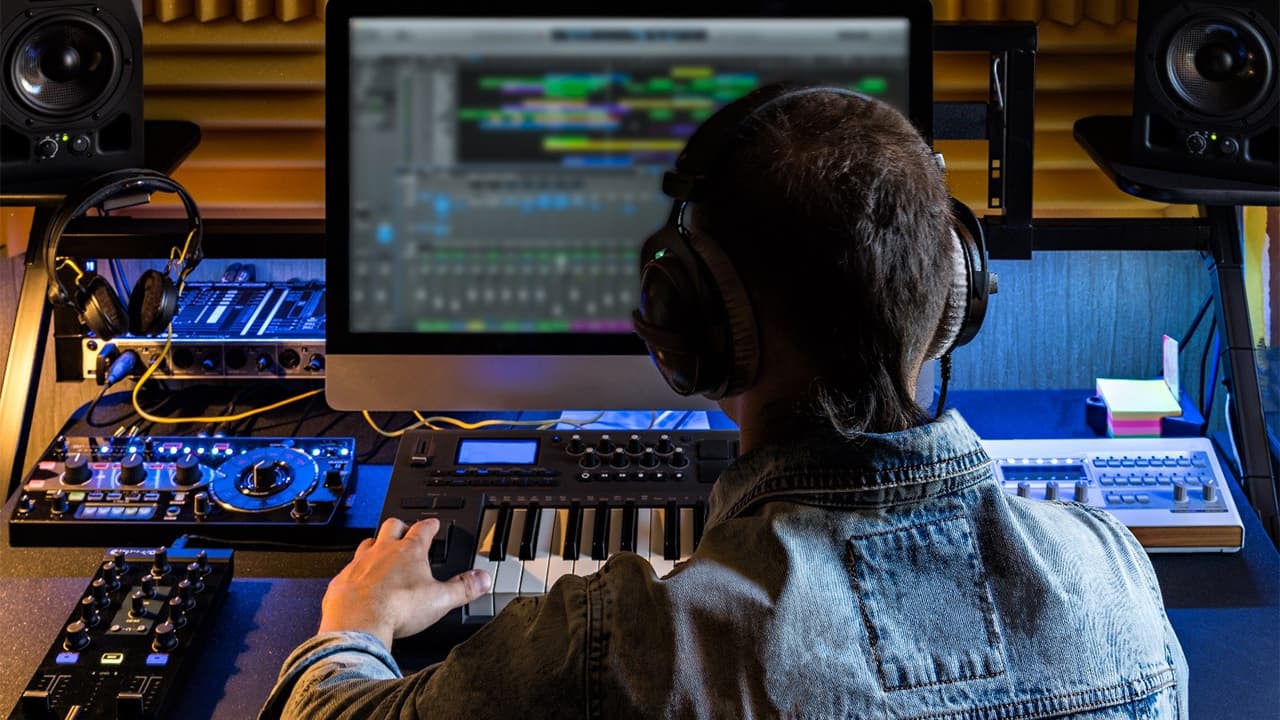Looping In Your Music Production is a revolutionary music production method.
Loops, loopers, and looping tools are important to how we make music at present.
With such a giant subject, getting began could seem intimidating. However, it does not have to be scary.
Looping is an inspiring creative tool that could benefit every producer. And When you have used a DAW before you have probably already done it!
In this post, I will show you guys everything you should know about loops and begin looping in your music production like a pro to get more fans.
What’s looping in you production?
Looping is recording on the fly into a seamless phrase that plays constantly again and again.
Looping could be done with a dedicated device like a looper pedal or sampler or in your DAW utilizing a plugin.
sound-on-sound looping means recording additional passes over the top of the original phrase. You could create entire songs utilizing sound-on-sound looping.
Looping originated with tape experiments in the 50s. It is known as looping because back then the two ends of a section of analog tape would be spliced together to form a literally closed loop.
Tape loops were first used by composers of the earliest electronic music, however, they started to be used more commonly in pop and rock in the 60s.
The psychedelic background sounds of The Beatles Tomorrow Never Knows were made using a tape loop.
Since then looping has seeped into all kinds of music.
Looping the way we all know it now was made by Robert Fripp in his tape experiments with Brian Eno.
His “Frippertronics” method was the first known case of sound-on-sound looping.
Then looping has become a staple of music production, composition, and performance.
Why use a looper?
Utilizing a looper to compose or perform music has a lot of advantages for your workflow.
Coordinating bandmates for rehearsals and shows is difficult. However, you could create a compelling live performance all by yourself when you could build entire tracks live using a looper.
Even when you are just writing a song, looping could be a powerful composition tool.
Staring at a blank DAW session could make you feel helpless. However, improvising with a looper is a good shortcut to inspiration—it’s like jamming with yourself!
Plugin loopers in your DAW could give you a good starting point. Drag your loops onto the timeline and rearrange them to get began composing from your creations.
Looper pedals
Looper pedals are one of the simplest methods to get into looping.
Loopers in stompbox format are designed for guitar, however, you could often plug anything with a ¼” output into them.
Some looper pedals even offer specialized inputs for microphones. This capability permits you to loop audio from sources like vocals or drums using a mic.
One performer to build an entire track from scratch in front of a live audience thanks to Loopers with microphones. Looping performances could be extremely impressive!
Looper pedals come in a wide range of formats. Everything from easy single switch pedals to powerful multi-track loop stations.
When you are just dipping your toes in the world of looping you may need to begin with something easy.
However, when you are a dedicated looping artist you may want something with more capabilities.
Looping with Samplers
samplers have looping and sequencing tools built-in.
Akai’s MPC range is one of the Sampling devices which made the first loops of breakbeats from vinyl records possible.
Looping the breakbeat again and again offered a steady groove for hip-hop artists to rap over. Looping samples kicked off the growth of hip-hop as we know it!
Today’s samplers could still loop samples and patterns in the same manner. Most samplers permit you to record your source material, set the beginning and finish points and loop the sample seamlessly.
Many producers still swear by the unique workflow of the Akai MPC, however, modern samplers just like the Korg Electribe or Roland SP-404 are adept looping devices for music production.
Looper plugins
Looping could take place just as easily in your DAW. DAW looping setups could be even more flexible than high-end pedals.
Many looping artists depend on Ableton Live for looping.
MIDI and audio clips could be looped easily in Ableton’s Session View and the dedicated Looper plugin could be utilized similar to a traditional stompbox looper.
Other DAWs have their own dedicated loopers and there are plenty of good VST looping plugins from independent developers. When you are looping in your DAW you have got plenty of options!
You could always make loops from segments of audio you have already recorded by carefully editing their begin and endpoints on the timeline and setting the regions to loop. In many DAWs you could do this by dragging the top right corner of the region:
How looping works
There’s a lot of different loopers, however, all of them work in essentially the same method.
Looping devices typically have a few basic functions:
- Record loop
- Set loop endpoint
- Overdub recording
Relying on what you are utilizing to make your loops these features might be handled by footswitches, pads or MIDI control.
In a typical pedal-style looper you may need just one footswitch to begin recording, close the loop and initiate overdubbing.
Bigger devices may include effects like reverse and half-speed recording.
Brother, I desire loops
Looping is among the largest music production innovations of the last few decades.
Whether you like to use a looper pedal, a plugin or a sampler, there’s as some ways to use loops as there are producers.
Now that you understand the basics of this powerful technique, get out there and begin looping in your music production.

